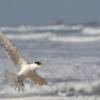-
Posts
9,518 -
Joined
-
Last visited
Content Type
Profiles
Forums
Gallery
Events
Everything posted by Jim Lad
-

SS Vinal Haven by TBlack - FINISHED
Jim Lad replied to TBlack's topic in - Build logs for subjects built 1851 - 1900
Tom, You 'snuck' in that eagle while I was away and I missed it completely. I think it might look nice in gold! You boat is looking good. It's always a comfort not to have to do the interiors. John- 326 replies
-
- vinal haven
- steam ship
-
(and 1 more)
Tagged with:
-
Beautifully done plating, Nils. John
- 113 replies
-
- heinrich kayser
- steamship
-
(and 1 more)
Tagged with:
-
Sorry, Augie, but from what we hear over here about advertising deals for the S.... B..., you will now be sued for several billion dollars for daring to mention the name of 'that' game! On the up side, though, your planking looks really good! John
- 2,191 replies
-
- confederacy
- Model Shipways
-
(and 1 more)
Tagged with:
-
What a fine memorial to your Grandfather, Nils! I'm looking forward to your future instalments. John
- 113 replies
-
- heinrich kayser
- steamship
-
(and 1 more)
Tagged with:
-

Masts and rigging both standing and running
Jim Lad replied to rafterrat_2005's topic in Masting, rigging and sails
What country and what period are you looking for; also exactly what type of ship? John -
Standard grey, Tim? I would have thought 'Measure 31/20L would be more appropriate! John
-
Bad luck, Andy. 35mm film is only 24mm between the perforations. John
- 382 replies
-
- stadacona
- sylvan scale models
-
(and 1 more)
Tagged with:
-
Just catching up with what you're doing, Tim! She's coming along very nicely indeed. John
-
She's really coming on well, Piet! I'm glad that you're doing the open mine door - it'll certainly work out OK! John
-
Ollie, Just let the planks sweep up under the counter in a smooth curve. Have the planks meet each other on the centreline. John
- 803 replies
-
- colonial cutter
- modellers shipyard
-
(and 1 more)
Tagged with:
-
By golly, Andy, it looks like it might actually work! What are you planning on using for the belt? John
- 382 replies
-
- stadacona
- sylvan scale models
-
(and 1 more)
Tagged with:
About us
Modelshipworld - Advancing Ship Modeling through Research
SSL Secured
Your security is important for us so this Website is SSL-Secured
NRG Mailing Address
Nautical Research Guild
237 South Lincoln Street
Westmont IL, 60559-1917
Model Ship World ® and the MSW logo are Registered Trademarks, and belong to the Nautical Research Guild (United States Patent and Trademark Office: No. 6,929,264 & No. 6,929,274, registered Dec. 20, 2022)
Helpful Links
About the NRG
If you enjoy building ship models that are historically accurate as well as beautiful, then The Nautical Research Guild (NRG) is just right for you.
The Guild is a non-profit educational organization whose mission is to “Advance Ship Modeling Through Research”. We provide support to our members in their efforts to raise the quality of their model ships.
The Nautical Research Guild has published our world-renowned quarterly magazine, The Nautical Research Journal, since 1955. The pages of the Journal are full of articles by accomplished ship modelers who show you how they create those exquisite details on their models, and by maritime historians who show you the correct details to build. The Journal is available in both print and digital editions. Go to the NRG web site (www.thenrg.org) to download a complimentary digital copy of the Journal. The NRG also publishes plan sets, books and compilations of back issues of the Journal and the former Ships in Scale and Model Ship Builder magazines.


